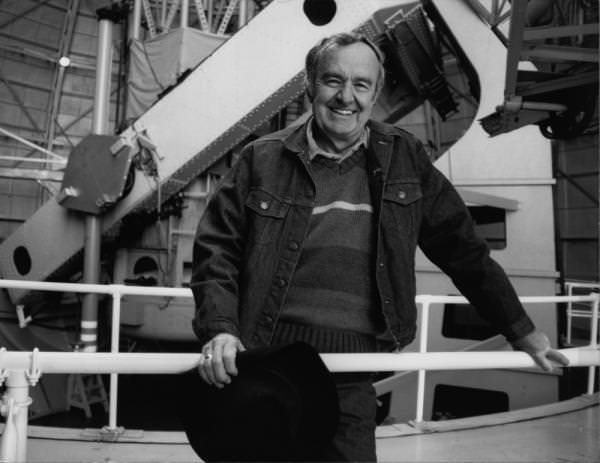[/caption]
Cosmologist Allan R. Sandage, who helped define the fields of observational cosmology and extragalactic astronomy, died November 13, 2010, at his home in San Gabriel, California, of pancreatic cancer. He was Edwin Hubble's former observing assistant and one of the most prominent astronomers of the last century. Sandage was 84. Below is his biography from the Carnegie Institution for Science:
Allan Sandage became a Carnegie staff member in 1952 after serving as the observing assistant in observational cosmology to Edwin Hubble on both Mount Wilson and Palomar from 1950 to 1953, and Walter Baade's PhD student in stellar evolution starting in 1949. Upon the death of Hubble in 1953, Sandage became responsible for developing the cosmology program using the 60- and 100-inch telescopes on Mount Wilson and with the newly commissioned Palomar 200-inch reflector. The programs centered on the recalibration of Hubble's extragalactic distance scale and combining discoveries in stellar evolution with observational cosmology. Much of his research in the past 50 years has been directed toward these goals.
Early discoveries at Palomar showed that Hubble's distances to galaxies were progressively incorrect, starting with Baade's finding in 1950 that Hubble's measured distance to the Andromeda Nebula, M31, was too small by a factor of about two. Sandage, first alone and later with G.A. Tammann professor of astronomy at the University of Basel, have carried the corrections progressively outward. This work indicates that by the time we reach the nearest cluster of galaxies in Virgo, the correction to Hubble's scale is close to a factor of 10. Since 1988, Sandage and Tammann have led a consortium using the Hubble Space Telescope to determine distances to parent galaxies that have produced type Ia supernovae, shown earlier to be one of the best standard candles in luminosity known. From the results of the calibrations, Sandage, Tammann, and Abijit Saha of the Kitt Peak National Optical Observatory have determined at this writing (2005) the value of the Hubble constant to be 60 km s -1 Mpc -1.
Sandage's other early research in observational stellar evolution led to a method developed in 1952 with Martin Schwarzschild of age-dating the stars from the luminosity turn-off from the main sequence of evolving stars in the Hertzsprung-Russell diagram. This method, improved over the years from theoretical calculations of stellar structure by many astronomers, remains the principal method of age dating. Sandage recently returned to problems related to the absolute magnitudes of RR Lyrae variable stars in globular clusters, important to the age dating of these most ancient of objects in the Galaxy.
Source: Carnegie Institution for Science
 Universe Today
Universe Today
